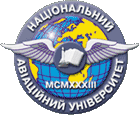THE ASSESSMENT OF THE ENVIRONMENTAL SITUATION AT THE TERRITORY OF THE DARNYTSYA INDUSTRIAL AREA OF THE KYIV CITY
DOI:
https://doi.org/10.18372/2310-5461.42.13751Keywords:
environment pollution, environment components, environment quality, urban areas revivalAbstract
The condition of urban ecosystems is strongly dependant on many factors, including population density, efficiency of municipal services provision and level of technogenic pressure. The major sources of negative impacts at urban territories on the environment are industrial zones. Due to decreasing efficiency of industrial zones exploitation and reduced business activity they are considered a liability demanding managerial solutions. The current trends for revitalization of cities, especially urban industrial zones, have been discussed. The most typical directions of industrial zones transformation is residential districts, recreational areas, entertaining and shopping centers. The need for the analysis of environment condition at the territory prior to its refurbishing is substantiated by the necessity to prevent population health risks.
The impacts of the Darnytsya industrial zone on the adjoined territory have been studied separately for major environment components. The sources of environment pollution here are Darnytsky car-repair plant, tank repair plant, pharmaceutical factory, railway depot, depot of subway, depot of trams and silk factory. The analysis has showed the considerable level of air pollution, but it is mostly conditioned by traffic, while soils are polluted with heavy metals, due to long term industrial activity at the territory. The green infrastructure of the affected area is in normal condition, especially residuals of natural forest phytocenosis. The state of water bodies is satisfactory, but with clear tendency to degradation. It is offered to include one of the lakes into the network of protected areas to prevent further quality reduction and conduct the information campaign on encourage local population to careful use of recreational resources at the territory. The project of the Darnytsky industrial area renovation and transformation to residential district or service center must include the soil remediation and maintenance of water objects.
References
Sudan: post-conflict environmental assessment. Nairobi: United Nations Environment Programme, 2007. 358 p.
Mudu P., Terracini B., Martuzzi M. Human Health in Areas with Industrial Contamination. Copenhagen: WHO Regional Office for Europe, 2014. 361 p.
Rosen M. A. Teaching the Environmental Impact of Industrial Processes. International Journal of Me-chanical Engineering Education. 2001. 29(1). Pp. 39–52. DOI: 10.7227/IJMEE.29.1.5.
Jackson S., Hitchins D., Eisner H. What Is the Systems Approach? Insight. 2010. Vol. 13., Issue 1. Рp. 41–43. DOI: 10.1002/inst.201013141.
Hyra D. Conceptualizing the New Urban Renewal. Urban Affairs Review. 2012. 48(4). Pp. 498–527. DOI: 10.1177/1078087411434905.
Roberts P., Sykes H., Granger R. Urban Regeneration. London: SAGE Publications Ltd, 2016. 360 p.
Preeti O., Dhote K., Sharma K. Exploring the concept of urban renewal in the indian context. ITPI Jour-nal. 2008. Vol. 5, No 2. Pp. 42 – 46
Petrovic J., Lecic D., Pavlovic D. Sustainable urban development and industrial pollution. Industrija. 2016. No 44. Pp. 167-185. DOI: 10.5937/industrija1-10466.
Kustysheva I. Consideration of Environmental Factors in Planning and Development of Urban Areas. IOP Series: Materials Science and Engineering. 2017. Pp. 262–271. DOI:10.1088/1757-899X/262/1/0121662017.
Svedin U. Urban Development and the Environmental Challenges – “Green” Systems Considerations for the EU. Filho L.W., Úbelis A., Bērziņa D. Sustainable Development, Knowledge Society and Smart Future Man-ufacturing Technologies. World Sustainability Series. Springer, Cham. Pp. 81–112. DOI: 10.1007/978-3-319-14883-0_7.
Matsyura M. V., Matsyura O.V. Practical issues of studying water systems. Melitopol: Water world, 2006. 46 p.

